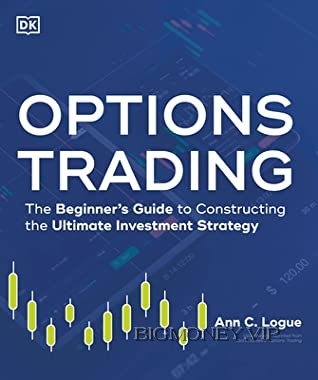Options Trading: The Beginner’s Guide to Constructing the Ultimate Investment Strategy by Ann C. Logue

PART 1
INTRODUCTION TO
OPTIONS TRADING
Options are powerful tools in the financial world. They give the
holders the right, but not the obligation, to buy or sell an asset
in the future at a price determined today. They are used as
insurance and as a source of speculative profits. The value is
derived from the value of an underlying asset or security, but it
is not identical to the value of that asset or security. Many
traders find that options can energize a portfolio, protect it
from volatility, or both.
Options come with their own set of terminology and
procedures that are important to know before using them.
Chapter 1 covers the very basics, Chapter 2 looks at reading
price quotes and placing orders, and Chapter 3 explains how the
exchanges and other institutions work. Chapter 4 reviews the
mathematics behind options, a key factor needed to value them.
Even if the math is more than you had in school, it influences
popular trading strategies and is used in discussions of options.
You won’t need to run the calculations, but it helps to know
what goes into them.
CHAPTER 1
ALL ABOUT OPTIONS
An option is nothing more than a choice. It’s a word we use a lot. What
option would you like for your side dish—the fries or the salad? The
movie options this weekend are rom-com or sci-fi. The skirt comes in
two color options—red and black. Our day camp has the option of after-
care for $20 a day.
In finance, an option gives you the choice between making a trade or
not making a trade. Maybe you want to buy a stock but want to see what
news the company announces first. A call option lets you set a price
today and gives you the choice of walking away if you change your
mind, for whatever reason. This gives options value as tools for making
money and tools for insurance.
In this chapter, we look at why we have options, cover the basic
definitions, and discuss how options operate as well as how they are
valued. That’s a good foundation for all the information that follows.
What Are Options?
An option is a contract that gives the holder the right, but not the
obligation, to buy or sell an asset at an agreed-upon price at any time
before an agreed-upon date in the future. This relatively simple
contract can be used to help people generate income, buy insurance
against money-losing price movements, or speculate on price changes.
An option is a derivative, a financial contract that draws its value from
the value of another asset, called an underlying asset, or the asset upon
which an option’s value is drawn. In contract law, that underlying asset
can be anything. On an options exchange, the underlying asset is usually
stock or a commodity, but it also can be the value of a market index,
interest rate, or even a characteristic of the market such as volatility.




